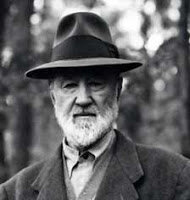
Ives’ String Quartet No. 2
I have long had a casual relationship with Charles Ives’ String Quartet No. 2. I was introduced to his music as an undergraduate, using it as a springboard to find my way into contemporary repertoire after having grown up hearing precious little of anything written post-1913 that wasn’t Broadway, mainstream jazz or pop music.
Ives opened up a whole new way of looking at music for me, a child-like way of toying with the material until it satisfied both child and grown-up sensibilities. No matter how eccentric, the result always seemed rooted in simple “what if” questions: If music can modulate from one key to another, why can't it be it two or more keys at the same time?

Jimi Hendrix’s “Star Spangled Banner” at Woodstock
Apart from the context, Jimi Hendrix's "Star Spangle Banner" is completely straightforward, a cinch to interpret. The context alone is what gives it its emotional and social complexity. That complexity also gives the piece more power than it already has, and it has quite a bit.